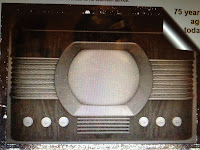The Internet is our everyday object in today lives and it is still and unstoppable growing. Its most drastic and biggest impact on our culture and commerce had since mid. of 1990. Where an options like communication via e-mails, instant messaging, first video calls, World Wide Web, blogs or online shopping. Internet space is personal, but public as well - it is always a "Micro" (user) and "Macro" (public). What means for example that we can write our own blogs, chose options as we want for ourselves, but if it is on internet, it is always share and open for anybody. It is new young artistic movement. Whatever we do with internet space and whatever idea we get and put it online, it will always be our own and different from others, new and original - Internet art!
Some people perceive Internet just like a software in machine called computer. Just a device which they can read through and look for information or any other reason. But for many of them, it is something more, opened doors to virtual world, be connected with anybody, anywhere and with massive amount of information. Great example of this theory is book wrote by Jay David Bolter and Diane Gromala, called "Windows and Mirrors". Main theme of the book is that many people believe that we are looking through the PC (windows) and there is no machine being there. Swimming in virtual space of information and options - called Notion of Transparency. Same theory is use for today smartphones as well.
 |
| Movement sensor for Xbox 360 - Kinect |
This "connection" between art and technology we can also see at Microsoft and his game changer - device called Kinect. It is a 360 mapping camera ( hologram ) which scanning our body, so we can control for example video games by our movements without any use of controller of interface. Personally, I call this idea art of technology, because they have done big jump forward in the way how to control things without any controllers. Also, by Kinect we cannot control only video games, computer geeks around world hacked it and use it for using desktop computer or even in medicine for controlling medical robots in laboratories. Here we can see the artistic way as well, how different person found and use one idea to create another.
 |
| Stelarc |
So what really creates a digital art are experiences, which user has with it. To design interesting and original artifact from internet, it is still bout interacting with the user! A new ways how to visualize for example web pages, its content and more. Something new then just reading of ordinary text on internet. By all this ways, internet art simply turns to personal way ( personal experiences ). It is all the time about one question - what is our relationship with technology. Good example is "Stelarc" (Stelious Arkadiou). A Cypriot - Australian artist who mixed technology interaction with human body and art. His whole body was wired into his nervous system. This system were then connected through computers to the internet on his web site, where people could press any button, by which they send a signal to the wires to make move his limbs! So anybody could simply a literally interact with his body in real life! This is called "Ultimate Interaction".
We can call Internet space even as alternative space, what is anything what people are interest in and doing that in new way - Art. Today technology allows us to do much interesting things to happen and challenge people to thinking about things and art around them. Even in visual and sound way, mixed together. As for example VJ (Vee Jay), what is audio - visual art way, quite close as DJ. Their main three elements are about : sound experiences, up to date technology and artistic understanding. To create perfect and original visual sense to audience, all these elements have to collaborate with a bit of creative idea of VJ and good technology to make these effects. The basic WorkFlow of a VJ is "CONTENT (idea) - PROCESS (what equipment use to show the content) - OUTPUT (where is it going to happen ex. big screen or wall etc.) Many of Vj's are still use VHS, rather then DVD because it has nicer (analog) video quality for example on big screens, which they are using most of time for their visual contents. The video on the right, shows example of Vj's performance.






